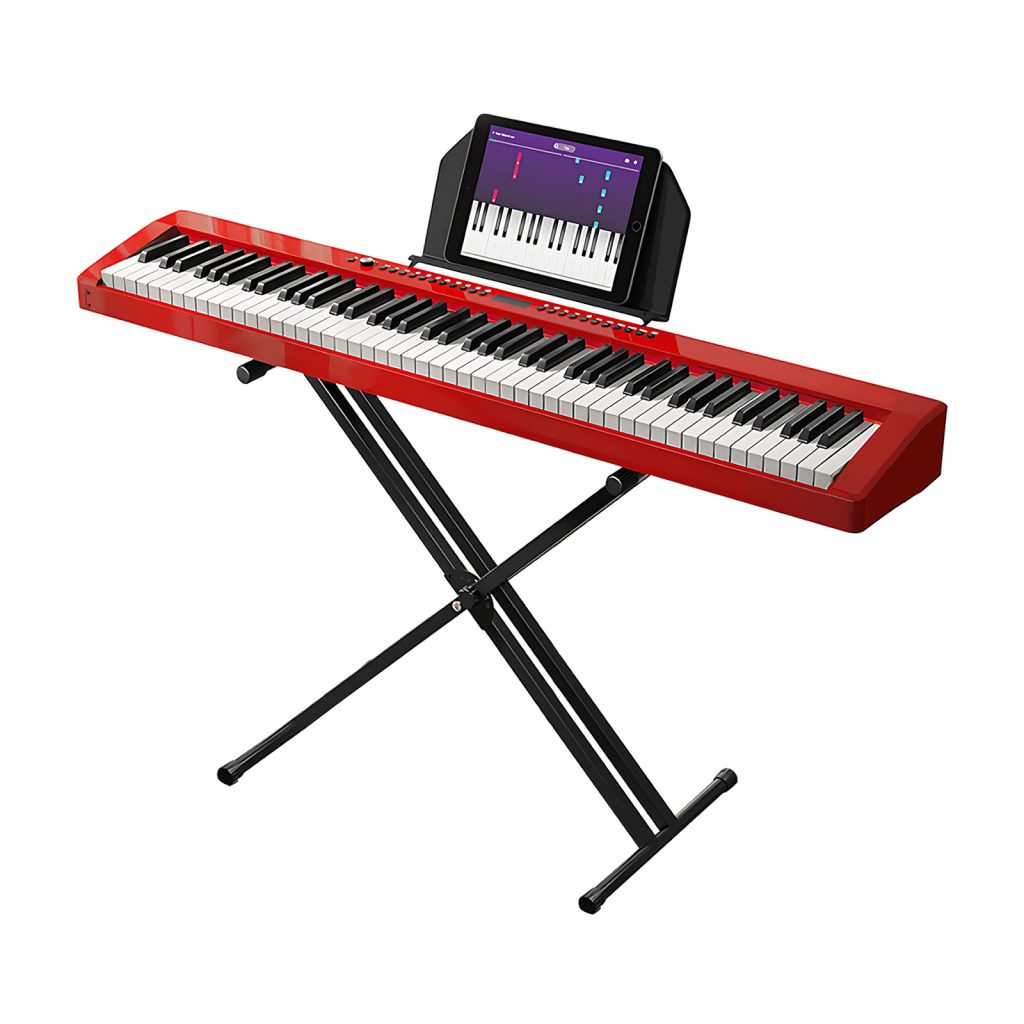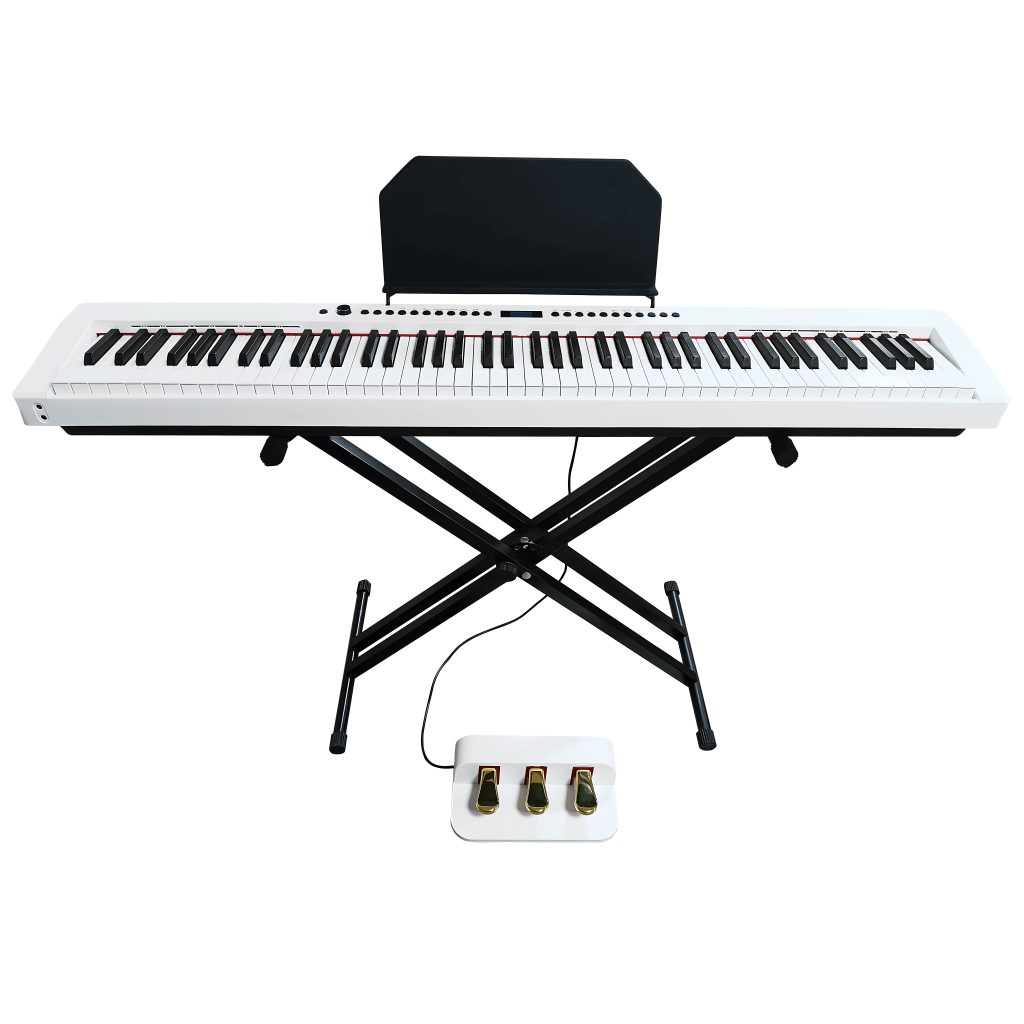Digital pianos have revolutionized the way musicians practice, perform, and compose music. These advanced instruments offer a variety of built-in features that enhance the playing experience, making them a favorite among beginners and professionals alike. Among the most sought-after functionalities are the metronome, recording function, teaching features, multiple sound effects, and accompaniment modes. In this article, we will delve into these essential features, explaining how they contribute to an enriched musical journey.
1. Built-in Metronome: Perfecting Timing and Rhythm
A metronome is an indispensable tool for musicians, helping them maintain consistent timing and rhythm. Unlike traditional standalone metronomes, digital pianos come with an integrated version, eliminating the need for an external device. Key benefits of a built-in metronome include:
- Adjustable Tempo – Players can set the speed from very slow (40 BPM) to extremely fast (240 BPM), catering to various musical genres and practice needs.
- Time Signature Variability – Many digital pianos allow users to customize time signatures (e.g., 4/4, 3/4, 6/8), helping musicians practice different styles.
- Auditory and Visual Cues – Some models feature blinking lights along with sound cues, ensuring learners stay on beat.
2. Recording Function: Capturing and Refining Performances
The recording function in digital pianos is a game-changer for both students and professional musicians. This feature enables players to record their performances, analyze them, and make improvements. Advantages of the recording function include:
- Self-Evaluation – Listening to recordings allows musicians to identify mistakes and refine techniques.
- Multi-Track Recording – Advanced digital pianos support multi-track recording, enabling players to layer different parts for more complex compositions.
- MIDI and Audio Export – Some digital pianos allow exporting recordings in MIDI or audio formats, making it easy to share or edit them using music production software.
3. Teaching Features: Enhancing Learning and Progression
Many digital pianos incorporate built-in teaching functions designed to assist beginners in their learning journey. These features help develop musical skills through interactive exercises and guided lessons. Notable teaching tools include:
- Guided Light Key System – Some models illuminate the correct keys, guiding beginners through pieces step-by-step.
- Split and Dual Mode – This allows the keyboard to be split into two equal sections, perfect for teacher-student duets.
- Lesson Mode with Pre-Recorded Songs – Digital pianos often include a repertoire of classical and contemporary pieces, helping learners practice with built-in tutorials.
- Integration with Learning Apps – Many digital pianos support Bluetooth or USB connectivity, allowing students to use apps like Flowkey, Simply Piano, and Yousician.
4. Multiple Sound Effects: Expanding Musical Creativity
One of the standout features of digital pianos is their ability to replicate a variety of instrument sounds and effects. This feature enables musicians to experiment with different tones, enhancing their creativity. Key sound capabilities include:
- Grand Piano Variations – Digital pianos come with multiple piano tones, ranging from concert grand to upright piano sounds.
- Orchestral Instruments – Users can access sounds like strings, organs, harpsichords, and electric pianos, broadening their musical expression.
- Effects such as Reverb, Chorus, and Delay – Built-in DSP (Digital Signal Processing) effects allow players to modify sound textures for a richer auditory experience.
- Layering and Splitting Sounds – Players can combine multiple sounds (e.g., piano and strings) or split the keyboard to play different instruments on each side.
5. Accompaniment Modes: Simulating a Full Band Experience
Accompaniment modes transform a solo piano performance into a dynamic ensemble experience. These features enable musicians to play alongside automated rhythms, basslines, and harmonies. Key aspects of accompaniment modes include:
- Auto-Chord Recognition – Digital pianos can detect chord progressions and generate a suitable backing track.
- Variety of Styles – From jazz and blues to pop and classical, players can explore a vast range of musical genres.
- One-Touch Arrangements – Some models offer one-touch settings, where the accompaniment style changes automatically based on the chords played.
- Realistic Drum Patterns – High-end digital pianos feature drum tracks that sync seamlessly with the player’s tempo.
The versatility of digital pianos makes them a superior choice for musicians seeking an all-in-one instrument. Whether it’s timing precision with a metronome, recording and evaluating performances, enhancing learning with teaching features, experimenting with diverse sound effects, or playing with accompaniment modes, digital pianos offer an unparalleled musical experience. As technology continues to evolve, these features will only become more sophisticated, catering to the ever-growing demands of modern musicians.




